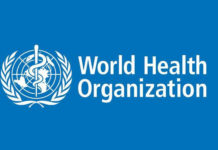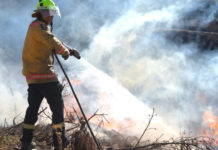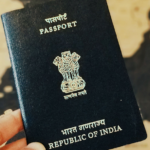Bubonic plague also called as the Black Death is a highly infectious disease which is often spread by the fleas on rodents. Chinese authorities have issued an alert and also forbidden eating certain animals.
When the whole world is fighting a pandemic which originated in the Wuhan city of China, now there has been an alert issued by the Chinese authorities in the Mongolia region for what is said to be the Bubonic plague.
A suspected case of bubonic plague was reported in a city in northern China on Sunday. Bayannur, Inner Mongolia Autonomous Region, announced a level III warning of plague prevention and control, state-run People’s Daily Online reported. The suspected bubonic plague case was reported on Saturday by a hospital in Bayannur. The local health authority announced that the warning period will continue until the end of 2020.
The warning on Sunday came after 4 reported cases of plague in people from Inner Mongolia. The warning in the Chinese region of Inner Mongolia comes a day after a hospital reported a patient suspected to have fallen ill with the potentially fatal disease.
Bayannur health committee has issued a third-level alert. Inn this alert people are forbidden of eating animals which can potentially carry the plague and the committee has also asked the public to report any cases that are suspected of the plague and also to report the dead and sick marmots who are large and heavy rodents that resemble squirrels. The spread of the plague is still unclear.
Plague cases are not uncommon in China but outbreaks have become increasingly rare. In the last decade between 2009-2018, China reported 26 plague cases and 11 deaths. The local authorities have warned that there is a risk of human plague epidemic spreading in the city. The health committee has already informed the public to improve the self-protection awareness and ability and also to inform and report abnormal health conditions.
On July 1, the 2 cases reported in western Mongolia have been confirmed by lab test results. The 2 cases are of two brothers who are 27 years old and 17 years old respectively. Both the brothers are being treated in different hospitals.
What is bubonic plague and what are the symptoms?
Bubonic plague, also known as the ‘Black Death’, caused more than 50 million deaths in Europe in the 14th century
Bubonic plague is a bacterial disease that is spread by fleas living on wild rodents such as marmots. According to World Health Organization, the plague is caused by the bacteria Yersinia pestis, a zoonotic bacterium usually found in small mammals and their fleas. While there are two main clinical forms of plague infection, bubonic plague is the most common form and is characterized by painful swollen lymph nodes or ‘buboes’. Plague is transmitted between animals and humans by the bite of infected fleas, direct contact with infected tissues, and inhalation of infected respiratory droplets.
As per WHO, people infected with plague usually develop acute febrile disease with other non-specific systemic symptoms after an incubation period of one to seven days, such as sudden onset of fever, chills, head and body aches, and weakness, vomiting and nausea. The bubonic plague attacks the lymphatic system, causing swelling in the lymph nodes. If untreated, the infection can spread to the blood or lungs.
Is bubonic plague fatal?
Bubonic plague can be a very severe disease in people, with a case-fatality ratio of 30 percent to 60 percent. According to the World Health Organization (WHO), it can kill an adult in less than 24 hours if not treated in time. From 2010 to 2015, there were 3,248 cases reported worldwide, including 584 deaths.
Historically, plague was responsible for widespread pandemics with high mortality. It was known as the “Black Death” during the fourteenth century, causing more than 50 million deaths in Europe. However, with the availability of antibiotics, the disease is largely treatable now.
Plague epidemics have occurred in Africa, Asia, and South America; but since the 1990s, most human cases have occurred in Africa. The three most endemic countries are the Democratic Republic of Congo, Madagascar, and Peru. In Madagascar cases of bubonic plague are reported nearly every year, during the epidemic season (between September and April).
By Deepika Agarwal













































